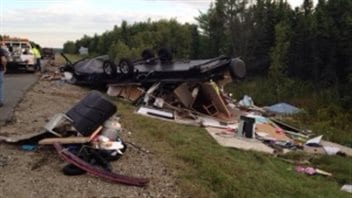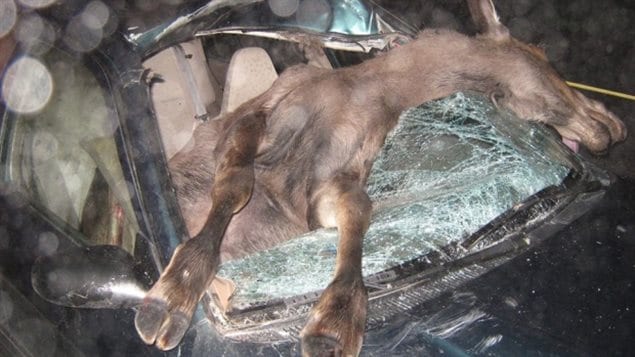A Canadian reality is that a great many cities and areas of Canada exist on the edges of the wilderness.
There are many cases of unexpected and often unfortunate encounters between man and nature
Particularly at this time of year there are often deadly collisions between moose and vehicles. That’s because moose, usually solitary animals deep in the woods, are roaming about looking for mates at this time of year and in that search they often cross roads into the paths of oncoming cars.

Accidents often occur after dusk or before dawn, when there is little or no light and the dark-fur of the moose is hard to see, in spite of their size. Adult moose can weigh up to 600kg and be around 2 metres tall at the shoulder.
The Atlantic island province of Newfoundland has a particularly high number of moose, and serious, even deadly, accidents are certainly not uncommon.
This week a 57-year-old man was found dead near Campbellton, Newfoundland after his motorcycle hit a moose at the crest of a hill along the north coast of the island.
Jamie Budden, a volunteer fire-chief in Whitbourne, a small community not far from the provincial capital, St John’s, says in his area they are seeing about two moose-car collision a day, just along the 75 kilometre stretch of the trans-Canada highway that runs through the area his department is responsible for, adding too many result in serious injuries or deaths.
Moose were introduced to the island in the late 1886 and again, more successfully in 1904. With virtually no predators on the island, they have since thrived and numbers ballooned.
Many say there are just too many, and the provincial government should allow more hunting.
However, moose are prevalent throughout Canada’s boreal forest and so are the collisions.
Last week two people were killed and eight injured in New Brunswick when a van hit a moose and went into the oncoming lane, hitting another vehicle towing a large trailer.
Several other deadly moose-vehicle collisions have occurred this year all across Canada.







For reasons beyond our control, and for an undetermined period of time, our comment section is now closed. However, our social networks remain open to your contributions.